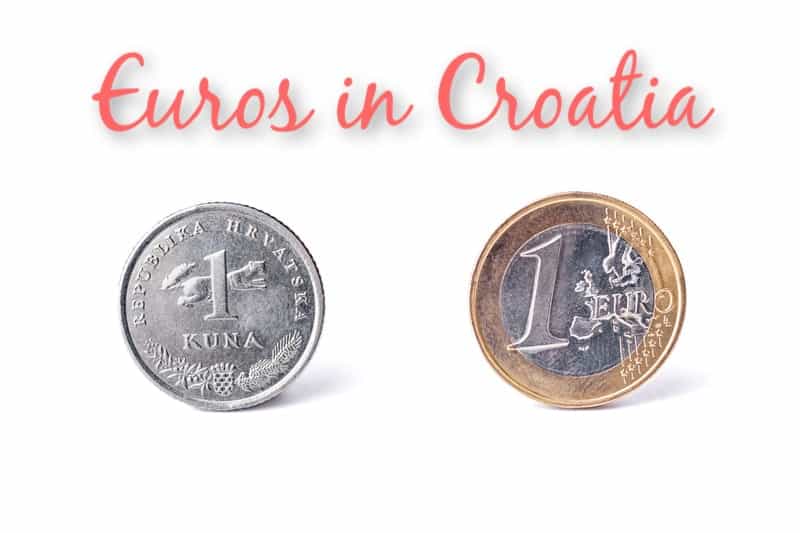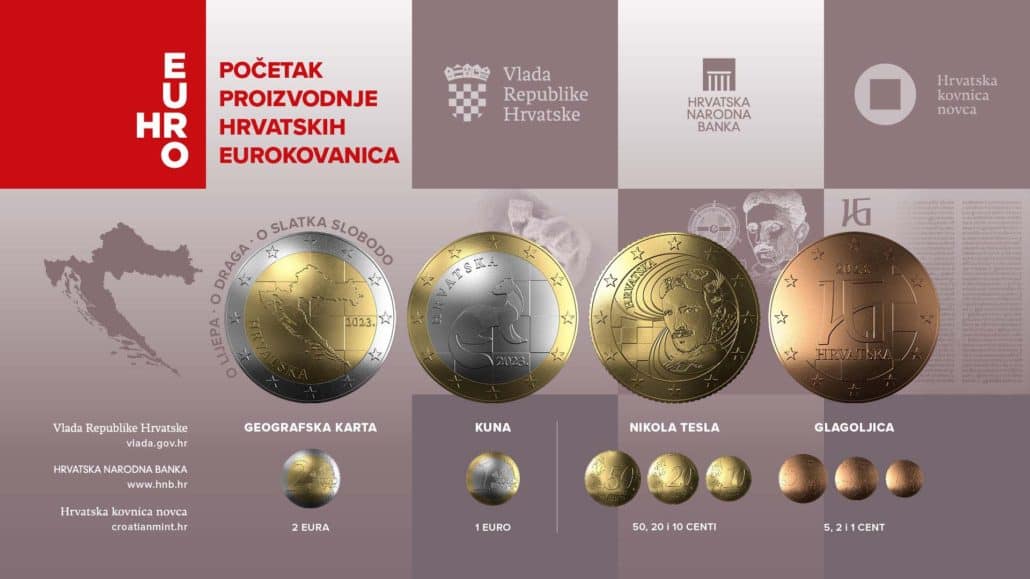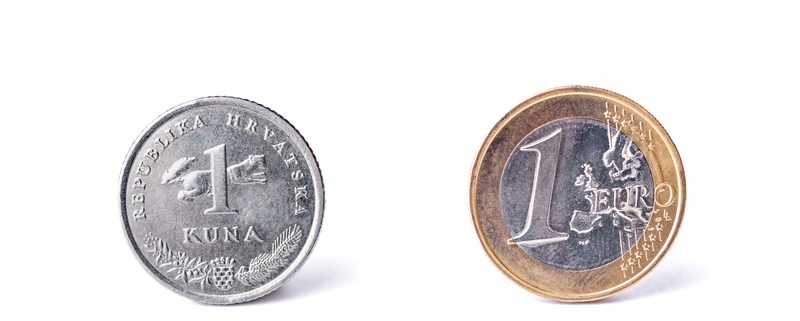New currency from 1st January 2023: Euros in Croatia
On 1st January 2023, Croatia will become the 20th European country to adopt the Euro as its currency – and of course, from that date the Kuna will be no more. Find out what this all means for travellers here.

Goodbye to The Kuna
Croatia introduced the Kuna as its currency back in 1994, following use of the Croatian Dinar in the country for three years following its independence from Yugoslavia. (The Yugoslav Dinar was the currency in that country.)
If you have any Kunas lying around at home, it is unlikely that foreign exchange offices in your home country will still accept them to change. However, should you visit Croatia in 2023 (or beyond), bring them with you to exchange in a Croatian bank. Or hang on to the Kuna coins for a souvenir!
Euros in Croatia
Since the announcement that Croatia was the join the Eurozone, the Euro-Kuna conversion rate has been fixed to €1 = 7.5345 Kunas. From early September 2022, prices of items in shops have been displayed in both Kunas and Euros, and this will continue into 2023 as well. Croatian citizens have been able to purchase a small package of Croatian Euros from 1st December 2022, although these can only be used as payment in Croatia and elsewhere in the Eurozone from 1st January 2023, of course. And for the first two weeks of 2023, cash payment can be made in either Euros or Kunas although change will only be issued in Euros.
Given the Euro already exists as a currency in a pretty widespread fashion across much of the EU, there’s not much preparation that visitors to the country need to undertake. Simply obtain your Euros as you normally would – from your preferred foreign exchange office or bank – and use them in Croatia! Alternatively, you may prefer to wait to travel to Croatia to withdraw Euros from ATMs (which are very common in the country) or simply make use of a debit or credit to pay for goods and services.
As before, we’d still recommend that you travel around Croatia with a small amount of cash rather than relying on card payments for everything.
What do Croatian Euros look like?
Croatian Euro coins began to be minted in July 2022 and the coins contain four different designs. The 2 Euro coin depicts a map of Croatia on the reverse; the 1 Euro coin shows the animal the kuna (pine marten in English), of course a nod to the previous currency; the 50, 20 and 10 cent coins show the Croatian-born inventor Nikola Tesla; and the 5, 2 and 1 cent coins show Glagolithic script, the first known Slavic alphabet.
You can see the designs of the Croatian Euro coins below.

Will anything else change after Euros in Croatia are introduced?
Apart from generally making travellers’ lives easier – especially those who travel to Croatia from Eurozone countries – a switch to the Euro in other EU countries has often seen concerns regarding an increase in prices, whether substantially or simply rounding up when prices are converted. It’s hard to gauge whether this will be the case for Croatia at the moment – this will be cleared in the coming months.
More info
For general Croatian currency advice, take a look at our Money in Croatia page.



